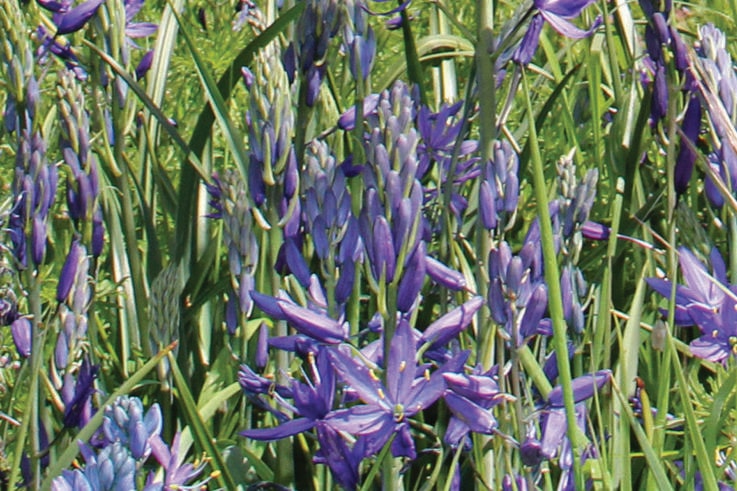Staff from the City of Castlegar and the Kootenay Native Plant Society (KNPS) recently held talks about how to reduce the impacts of a proposed playground on camas plants at Millennium Park.
While the city has proposed to build the playground near the outdoor gym equipment in the park, the society says countless numbers of camas would be destroyed in the process.
An initial meeting was held in late June between the two groups at city hall and a second meeting took place a week later at the park.
During the meetings, both groups talked about relocating some of the camas from the playground area and putting it in a camas conservation area of the park. The area is approximately one acre in size.
The groups agreed about installing a fence around the circumference of the conservation area to protect the camas.
“We’re hoping to build a split rail fence” said KNPS director Valerie Huff.
“It won’t keep people out, but it will highlight the area and make people aware that it’s a separate and important area in the park.”
City communications coordinator Bree Seabrook said the fence could be made of cedar and would likely be built at waist height.
Another spot where some of the camas could be relocated from the playground area is in the Kp’itl’els area in South Brilliant, which is an important and sacred area for local First Nations.
While Huff admits some of the camas will likely be moved, she said both groups agreed during the talks to preserve as much of the camas as possible at the playground location.
“Salvaging the camas is really a last resort. It’s not so much about the individual plants, but about the ecological community that they support,” said Huff.
“It’s really hard to move the plants and you don’t have the same success compared to if you just leave them in their original location.”
Both groups also identified natural elements like trees and vegetation that could be preserved around the playground area during the last meeting.
Overall, Seabrook said the environmental impact from the playground area will be minimal.
“The actual location has a relatively small footprint and we’re working to minimize that as much as possible,” said Seabrook.
“Really, impacted areas would just be the playground area and space needed to meet playground safety guidelines.”
The two parties are also working together on a joint statement to let the public know how they’re working together on the camas situation.
Over 600 people have signed a petition asking the city to protect the camas around the proposed park.
Camas is a rare plant found in low-elevation areas of southern British Columbia and has been a staple food for First Nations for millennia, according to the KNPS.
It’s important to save the remaining camas in the park, according to Huff.
“We’re probably down to one per cent of the camas that was originally in the park thirty years ago,” said Huff.
“It’s continual loss and it’s death by a thousand cuts. This isn’t about saving one plant, it’s really about saving a community.”
READ MORE: Kootenay Camas Project gets help mapping out lily locations
@connortrembley
connor.trembley@castlegarnews.com
Like us on Facebook and follow us on Twitter.
